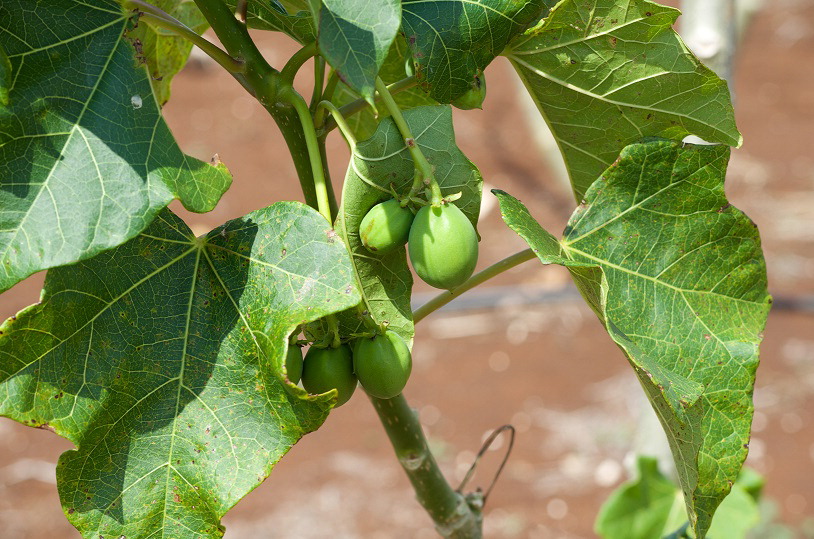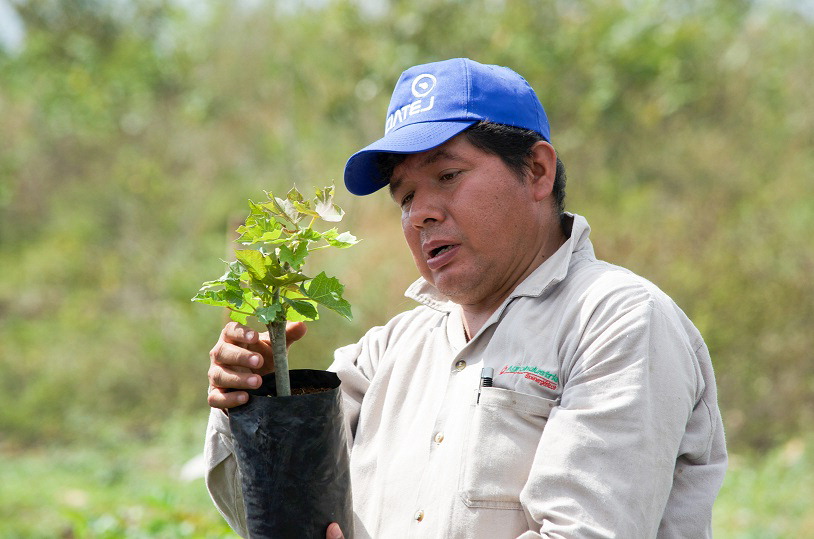This project relates to a five-year Partnerships for International Research and Education (PIRE) award entitled Sustainability, Ecosystem Services, and Bioenergy Development across the Americas, which was funded by NSF beginning in October 2012. Dr. Julio Sacramento-Rivero and his colleagues will work with Dr. Kathy Halvorsen and her group at Michigan Tech to address such questions as “How is bioenergy development affecting social systems?” and “What sustainability indicators and metrics best assess biofuel sustainability across highly variable Pan American socio-ecological systems?” This work will be performed in the context of the jatropha oil industry currently under development in the state of Yucatan, Mexico. This case study is unique in that it presents both universal and idiosyncratic aspects of sustainability to be evaluated. Although commercial-oil production is not expected to begin in Yucatan until 2014 or 2015, several communities have already been affected by the planting and cultivation stages, and it is uncertain how the currently planned commercialization model will impact sustainability in the region.

| 
|
| New buds on a jatropha plant (photo courtesy of Dr. Sacremento). | A team member transplants a new plantlet (photo courtesy of Dr. Sacremento). |
Thus, this project aims to evaluate the sustainability of the production and commercialization process of jatropha oil, and the socioeconomic impacts of this activity on the local communities in Yucatan and the broader national system. Also, although the current commercialization model is primarily concerned with biodiesel sales, it has been strongly suggested that the economic viability of such systems can be greatly benefit from the integral use of the jatropha plant. In that sense, a biorefinery system will be designed and included in the sustainability assessment, as an alternative, expanded system. For this stage, fundamental engineering experiments will be performed on the local feedstock at the Faculty of Chemical Engineering at UADY and at MTU, which will generate characterization data of the local feedstock that will be required for evaluation of both biofuel-oriented and biorefinery-oriented systems. Funds from the PEER Science grant to UADY will support the purchase of new lab equipment, materials, and software; domestic and international travel for fieldwork and training; and PhD student stipend support.
Final Summary of Project Activities
In this now-completed project, Dr. Sacramento and his colleagues evaluated the environmental, socioeconomic, cultural, and political impacts of jatropha plantations in the Yucatan from a multi-stakeholder’s perspective, including the views of government agencies, private companies, and Maya small farmers. The research team was multidisciplinary, with leaders in the areas of engineering, anthropology, and economics from the Universidad Autonoma de Yucatan (UADY), with support from U.S. partners in these areas from Michigan Technological University. By analyzing the institutional context in which jatropha plantations were promoted and implemented in the Yucatan, they concluded that public programs were making many assumptions unsupported by scientific facts, similar to the situation in other countries. Jatropha is still a wild plant, with no technological package for optimizing seed yield, no selected elite varieties that can ensure good productivity, and associated with myths of being a plant that can endure marginal soils without need of irrigation, pesticides, or fertilizers. Many projects worldwide were initiated under these premises, following business projections assuming annual productivities between 5 and 10 tons of seed per hectare; this led to inevitable failure when after 4 years annual yields could not reach 1 ton/ha in most cases. Implementation of jatropha projects in Yucatan was different than in other regions of Mexico and the world, in the sense that the investment in land and infrastructure came from private companies, which in turn had access to some limited seed capital from public funds. Global Clean Energy Holdings (GCEH), the company in which this team centered their case study, created many jobs in the local community of Sucopo, and while it lasted, provided better salaries and benefits than those required by law, offering much better job conditions than what the peasants were used to from experiences working for other companies in the region. Unfortunately, they also created expectations of long-term jobs and therefore, when the jatropha business collapsed after only 4 years, they were left unemployed and disappointed.
By analyzing the economic costs and benefits of jatropha plantations in Yucatan, Dr. Sacramento and his group identified that the local peasants increased their annual household income by about U.S. $1,080 during the time they had the jobs. This amount was significant to them, allowing them to purchase goods such as TVs and motorcycles and improving the local economies in the process. From the investors’ point of view, the project was an economic failure due to the low productivities that made it impossible to move to the biodiesel production stage. By analyzing the compatibility between traditional milpa production (long fallow swidden system) and the production of jatropha for biodiesel, the researchers observed two main issues. First, workers in the jatropha plantations did find themselves with additional time to dedicate to their own private milpas or parcelas. This reflected in the economic analysis as increased household income relative to those that did not work in the jatropha plantations. Secondd, although the plantations were established on private land categorized as “abandoned cattle ranches,” local community members declared that they removed vegetation older than 20 years in clearing the sites. Some of this land was culturally considered by the local Maya people as part of their natural heritage, and therefore they traditionally obtained some environmental services from that area, including, for example, by gathering wood, wild fruits, and in some cases medicinal plants or by hunting animals. When the jatropha companies cleaned more than 5,000 ha of this secondary forest, many species lost their habitat and food sources, becoming pests to the neighboring farmers, whose milpa harvests were subsequently devastated.
By evaluating the environmental burden of the (hypothetical) biodiesel production system from a Life Cycle Assessment (LCA) perspective, it became clear that the production of biodiesel from jatropha can be energetically self-sufficient. Even though the GHG emission savings are considerable (57% or higher), using pesticides, fungicides, and insecticides on the plantations causes important impacts, especially on the eutrophication potential. These red flags should be further investigated in the local context (i.e., karstic soil, underground river flows, and cenotes) using an environmental impact assessment, in order to evaluate with greater accuracy the impacts that these new activities would have on the local environment. Furthermore, agronomic studies should be directed at minimizing the use of these substances without significantly decreasing seed yields.
By comparing the overall sustainability assessment of the biodiesel-oriented and the biorefinery-oriented systems, the main result of this project was the finding that the process can be economically feasible even at low seed productivity if a pyrolysis process is implemented to produce a high value-added biochar. In order to achieve this, a viable market should be identified in the region. Greenhouse gas emissions and other environmental impact indicators also benefit in a biorefinery-oriented system. These results have already had an impact in the academic community, as the methodology used for the sustainability assessment can be generalized for assessing many different systems for bioenergy production (for example, lignocellulosic bioethanol and solid biofuels). This methodology will be proposed in subsequent projects to governmental stakeholders to promote its use as part of national standard sustainability assessment methodologies.
During the 4 years that the project was in operation, the results of these evaluations have been presented in various fora where academics, researchers, and students have learned about the sustainability issues of biofuels. This has been done through conference presentations, project meetings, and a formal online course offered for graduate students in both Mexico and the United States. As a result of these interactions, the PI has been included in two important Mexican national networks of biofuel research: the Red Tematica en Bioenergia and three clusters of the Centro Mexicano de Innovación en Bioenergía (CEMIEBio). The latter provided access to funds to polish the methodologies proposed in the PEER project and apply them to other biofuel pathways relevant to Mexico. Although his PEER grant ended as of March 31, 2017, Dr. Sacramento expects to continue collaborating with his U.S. partners. He and his team have secured funding for the next 4 years from the Fondo de Sustentabilidad Energética-SENERCONACYT.
Back to PEER-PIRE Grant Recipients





